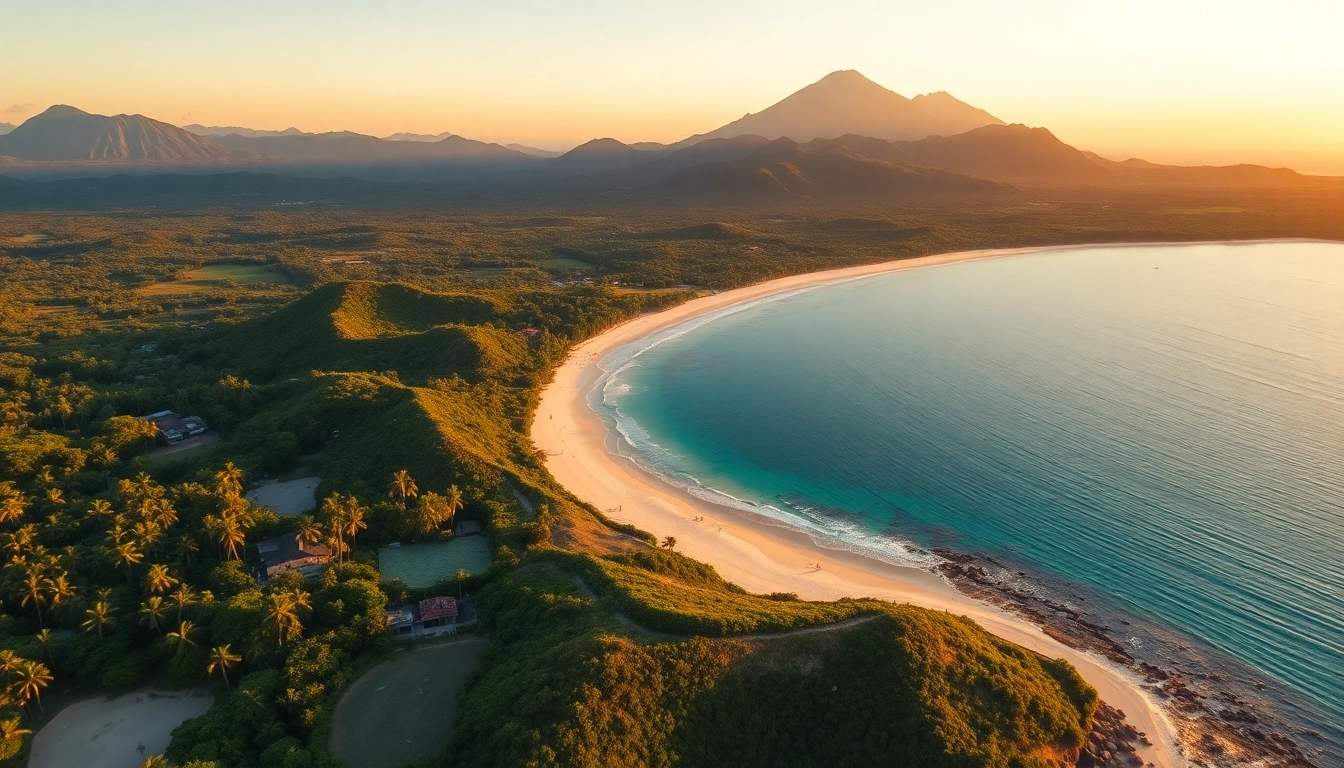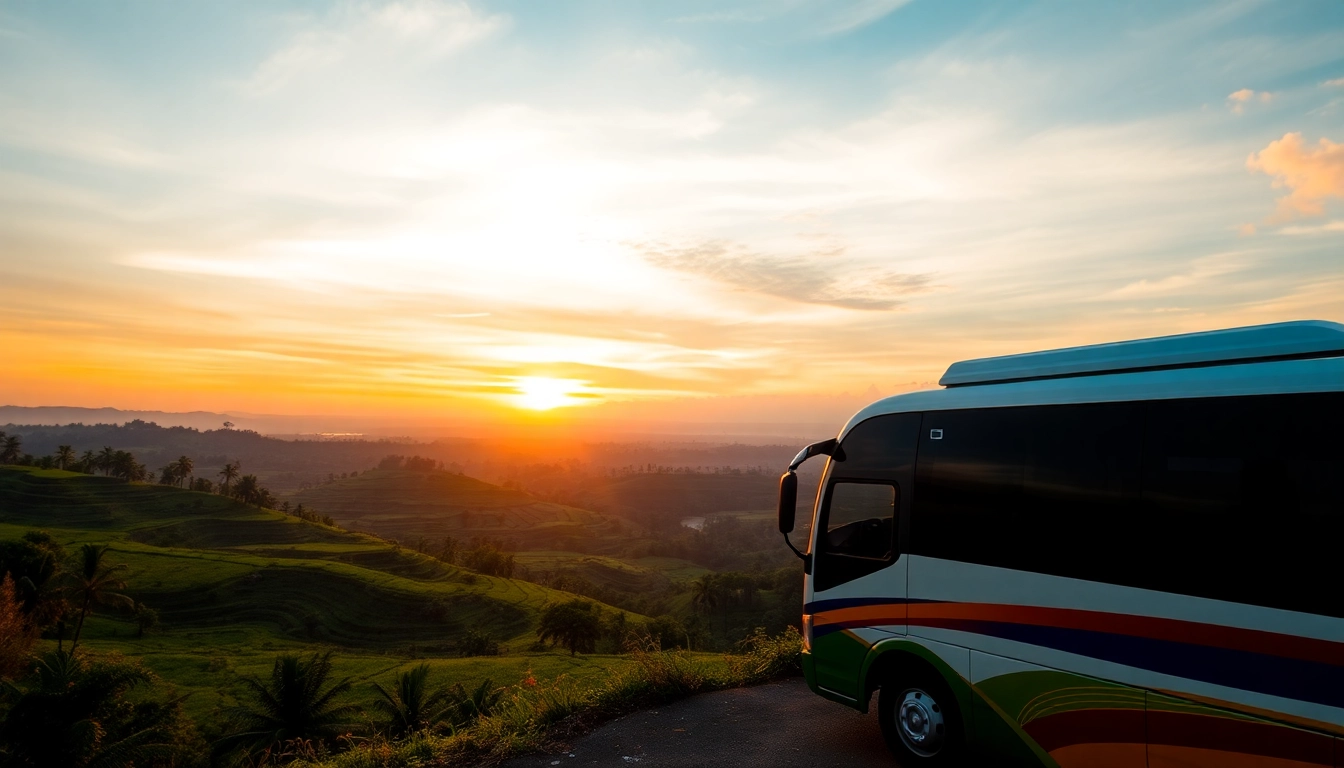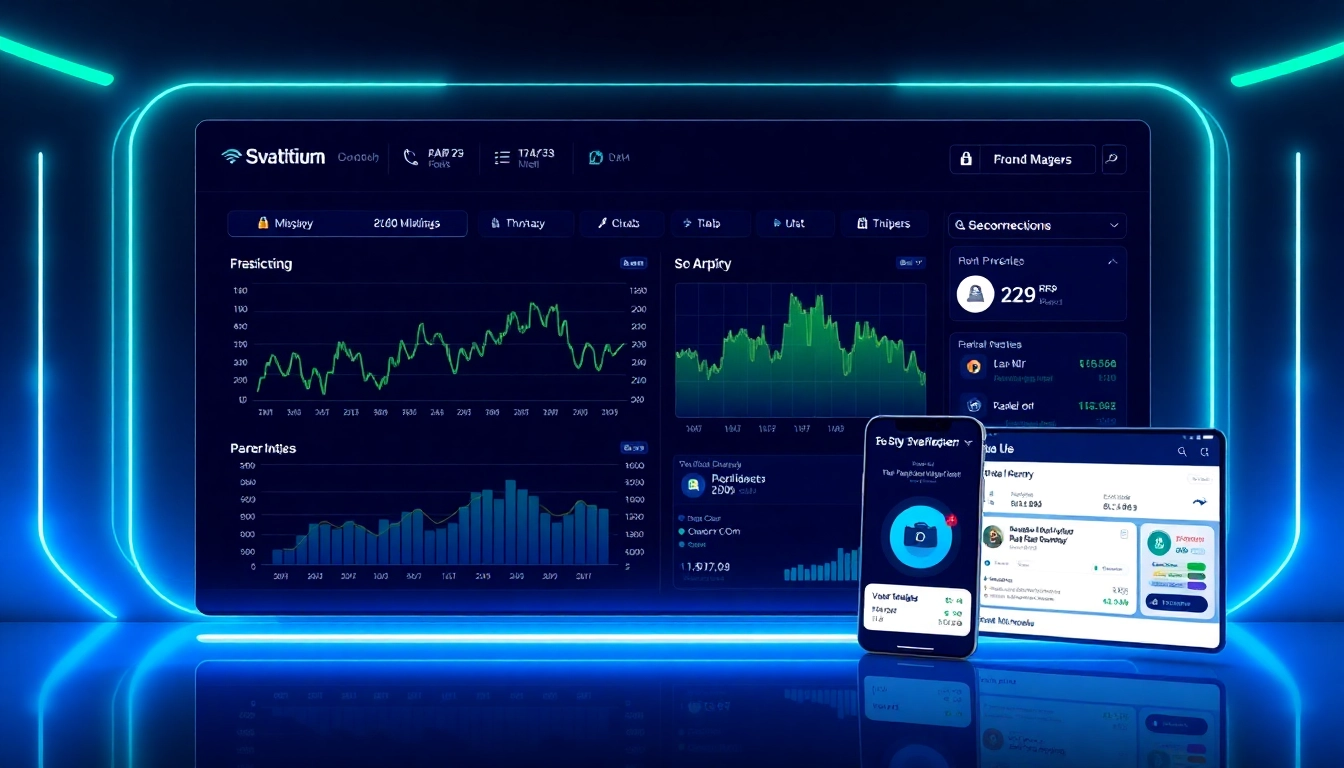
Introduction to Lombok: An Indonesian Island of Diversity
Nestled in the heart of Indonesia’s Lesser Sunda Islands, Lombok is a captivating island that embodies a harmonious blend of natural beauty, rich culture, and adventure. Often overshadowed by its more famous neighbor Bali, Lombok offers a quieter yet equally mesmerizing experience for travelers seeking authentic Indonesian hospitality and diverse landscapes. As you explore this enchanting island, you’ll discover pristine beaches, towering volcanoes, vibrant local traditions, and a welcoming community eager to share their heritage. To truly appreciate the allure of Lombok, one must delve into its geographical features, cultural tapestry, and historical evolution that have shaped it into the unique destination it is today. For more detailed insights and planning resources, visit Lombok.
Geographical Features and Location Overview
Lombok spans an area of approximately 4,725 square kilometers and is part of Indonesia’s Nusa Tenggara Barat province. Its strategic position separates the main Indonesian archipelago from Australia and is bordered by the Lombok Strait, which connects the Indian Ocean with the Bali Sea. The island’s terrain is characterized by dramatic landscapes, including lush rice terraces, rugged mountains, and extensive coastlines. The most dominant geographical feature is Gunung Rinjani, Indonesia’s second-highest volcano at 3,726 meters, which forms a dramatic backdrop and a central hub for adventure tourism.
The island is divided into several regencies, each offering distinct attractions—Lombok Barat (West Lombok), Lombok Tengah (Central Lombok), Lombok Timur (East Lombok), and Lombok Utara (North Lombok). These regions encompass pristine beaches, traditional villages, and protected natural parks, creating a diverse and interconnected landscape. The geography directly influences the climate—tropical with a distinct dry season from May to September and a rainy season from November to March—making careful planning essential for travelers.
The surrounding waters are equally captivating; the Lombok Strait and surrounding coral reefs host vibrant marine ecosystems. This confluence of terrestrial and marine gems cements Lombok as a premier eco-tourism hub. Its strategic maritime location also historically made it an essential trade route, enriching its cultural and economic development over centuries.
Cultural Highlights and Local Traditions
Lombok’s culture is deeply rooted in the traditions of the Sasak people, who comprise the majority of its population. This indigenous community maintains centuries-old customs, weaving, pottery, and music that reflect their animist beliefs and Islamic influences. Visitors are often captivated by the vibrant local ceremonies, traditional dances such as the Gendang Beleq, and intricate woven textiles like songket and ikat fabrics.
One prominent cultural event is the Bau Nyale Festival, where locals hunt for the legendary worms (Nyale) believed to be the reincarnation of Princess Mandalika. This festival, held annually in Lombok Tengah, blends spiritual rituals with communal celebration, offering travelers an authentic glimpse into Sasak spiritual life.
Additionally, the island’s Muslim identity is evident in the ornate mosques, Islamic architecture, and daily prayers, which coexist seamlessly with traditional rituals. These cultural traditions are not only preserved but are also evolving as Lombok opens more to eco-tourism and intercultural exchanges, fostering a unique and welcoming environment.
Historical Significance and Development
Historically, Lombok has been a crossroads of trade, migration, and cultural exchange, influenced by Indian, Chinese, Arab, and Dutch traders. Evidence of ancient settlements and rock carvings suggests human presence dating back thousands of years, with the island’s most significant heritage coming from the Majapahit Empire and later colonial influences.
The Dutch first arrived in the 17th century, establishing control over parts of Lombok until the Indonesian independence movement in the 20th century. Post-independence, Lombok’s development was primarily driven by agriculture, fishing, and the gradual rise of tourism, particularly after the 1970s when international travelers began discovering its untouched beauty.
In recent decades, infrastructural improvements, including airports, roads, and accommodations, have further integrated Lombok into the global tourism market. Its historical trajectory reflects resilience and cultural pride, and today, Lombok stands as a symbol of natural and cultural harmony—ready to welcome more explorers seeking both adventure and authenticity.
Must-Visit Destinations and Natural Wonders in Lombok
Pantai Tanjung Aan and Pantai Selong Belanak
For beach enthusiasts, Lombok offers some of Indonesia’s most exquisite coastlines. Pantai Tanjung Aan is renowned for its white sands, turquoise waters, and unique granule-sized sand known locally as “serpent sands.” It’s an idyllic spot for sunbathing, swimming, and beach volleyball. Nearby, Pantai Selong Belanak attracts surfers, beginners and experts alike, thanks to its gentle swells and warm water.
These beaches are also part of Lombok’s community-based tourism initiatives, which promote sustainable tourism and involve local residents in hospitality and conservation efforts, ensuring long-term benefits for local communities.
Gunung Rinjani: Indonesia’s Second-Highest Volcano
Standing majestically at 3,726 meters, Gunung Rinjani is both a sacred mountain and an adventure magnet. Trekking to Rinjani’s crater lake, Segara Anak, provides a challenging yet rewarding experience with breathtaking views of the caldera and surrounding landscapes. The climb usually takes 2-3 days, and guides are recommended to navigate the rugged terrain safely.
The volcano also features hot springs, waterfalls, and diverse flora and fauna, making it a significant site for ecological and geological studies. Conservation efforts aim to preserve its environment amid increasing visitor numbers, employing responsible tourism practices that balance adventure with ecological sustainability.
Gili Islands: Marine Life and Island Hopping
Just off the northwest coast of Lombok lie the famous Gili Islands—Gili Trawangan, Gili Air, and Gili Meno—each offering a different atmosphere from lively to tranquil. These islands are renowned for their crystal-clear waters, vibrant coral reefs, and abundant marine biodiversity, making them a top destination for snorkeling and diving.
Gili Trawangan is the most developed, featuring bustling nightlife and diverse accommodation options. Gili Air offers a more relaxed vibe with a focus on eco-tourism, while Gili Meno is perfect for couples seeking peace and pristine nature. The islands are also a model for sustainable tourism initiatives, with many operators promoting coral reef conservation and waste management.
Adventure and Outdoor Activities on Lombok
Hiking, Trekking, and Mountain Expeditions
Beyond Rinjani, Lombok’s diverse terrain offers countless trails for hiking and trekking. Visitors can explore the lush Sendang Gile and Tiu Kelep waterfalls, accessible via a well-marked jungle trek. The treks provide opportunities to observe native flora and fauna, including wild monkeys and exotic birds.
For seasoned hikers, multi-day expeditions to higher elevations and volcanic craters are possible, often including camping under starry skies. Guided experiences enhance safety, and local operators often incorporate eco-conscious practices to minimize environmental impact.
Water Sports: Surfing, Snorkeling, and Diving
Lombok’s extensive coastlines and surrounding reefs make it a premier destination for water sports. Surf destinations like Kuta and Gerupuk are globally recognized for their perfect waves suitable for all skill levels. Snorkeling and diving excursions explore coral gardens, manta ray sites, and shipwrecks, showcasing marine biodiversity.
Several dive shops adhere to international safety standards and promote coral reef protection. These activities often include programs for environmental awareness and reef conservation, contributing to sustainable tourism development.
Wildlife and Eco-Tourism Opportunities
Lombok’s natural parks, such as Narmada Park and Gunung Rinjani National Park, serve as habitats for endemic species and migratory birds. Eco-tours focus on wildlife observation, habitat preservation, and environmental education.
Community-led initiatives support eco-tourism with programs like mangrove conservation, turtle hatcheries, and rainforest walks. These activities aim to preserve Lombok’s biodiversity while providing sustainable livelihoods for local residents.
Local Culture and Unique Experiences
Traditional Sasak Villages and Handicrafts
Visiting traditional Sasak villages such as Sade and Sukarara allows travelers to witness centuries-old crafts and daily customs. Sade is famous for its traditional houses with alang-alang roofs and weaving workshops, where visitors can learn about textile arts. Sukarara, known for its intricate songket weaving, offers hands-on experiences and opportunities to purchase authentic souvenirs.
Participating in these cultural activities fosters appreciation for indigenous skills and supports local artisans. Preservation efforts focus on maintaining traditional crafts amidst modern influences.
Festivals and Cultural Events
Cultural festivals such as Bau Nyale and the Sasak Wedding Ceremony showcase Lombok’s spiritual and communal life. These events feature dance performances, traditional music, costume parades, and culinary offerings, providing immersive experiences for visitors.
Attending festivals promotes cultural exchange, preserves ancestral customs, and deepens understanding of Lombok’s spiritual landscape.
Cooking Classes and Culinary Delights
Culinary experiences are an integral part of Lombok’s cultural identity. Guests can participate in cooking classes that feature local ingredients like spices, coconut, and fresh seafood. Signature dishes include Ayam Taliwang (spicy grilled chicken), Plecing Kangkung (water spinach salad), and Sate Rembiga.
These classes often include visits to traditional markets, allowing travelers to learn about ingredients and local food culture while supporting small vendors.
Planning Your Trip to Lombok: Tips and Insights
Best Times to Visit and Climate Considerations
The optimal time to explore Lombok is during its dry season from May to September, when the weather is warm, with less chance of rain, ideal for outdoor activities and beach outings. The shoulder months of April and October can also be pleasant, offering fewer crowds. The rainy season from November to March brings heavy showers, which may hamper trekking and water-based activities but can be lush and vibrant for nature lovers.
Planning travel around these climatic patterns ensures a more enjoyable experience and maximizes the chances of clear skies for sightseeing and adventures.
Getting Around: Transportation Options
Lombok’s transportation infrastructure includes domestic flights, taxis, motorbike rentals, and shuttle services, making travel flexible and accessible. The Lombok International Airport connects the island to major Indonesian hubs and neighboring countries. Car and motorbike rentals are popular for exploring the island independently, but travelers should exercise caution due to local driving habits.
For eco-friendly options, biking and walking are encouraged in motorbike-restricted areas and villages. Many resorts and tour operators offer organized transport, including boat trips and guided excursions.
Accommodation and Local Cuisine Recommendations
Accommodation ranges from luxury resorts and boutique hotels to budget homestays and eco-lodges. Areas like Senggigi and Kuta Lombok are popular for their beachfront resorts, while rural villages offer authentic homestays supporting community tourism. It’s advisable to book in advance during peak seasons.
When it comes to dining, local warungs (small eateries) serve traditional dishes, and seafood is freshly caught daily. Sampling Lombok’s culinary delights provides an authentic taste of Indonesian coastal cuisine, including spicy sates, grilled fish, and tropical fruits.



